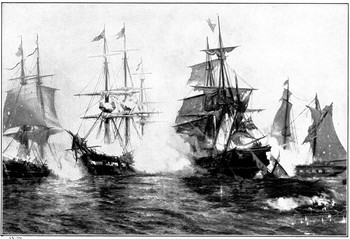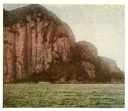Part 3: The English Take Control The battleground became Canada, and the struggles were fierce. Lake Champlain became a main battleground.
French success, however, was short-lived. Looking to turn the tables, the English, under Jeffery Amherst and James Wolfe (their two most successful commanders), seized the island fortress of Louisbourg, on Cape Breton Island, far to the northeast. In the same year, 1758, British troops captured Fort Frontenac, on Lake Ontario, the main supply center for French forces in the Great Lakes area. French troops were now completely cut off from reinforcements of food, troops, and weapons. The next year, 1759 brought two momentous events:
Next page > Victory and Lessons Learned > Page 1, 2, 3, 4 |
|
Social Studies for Kids
copyright 2002–2025
David White

 In
1757, the French seized
In
1757, the French seized  The
Battle of Quebec was an epic struggle in itself. The French
had thought that they were safe in their fort high on a
cliff, surrounded by easily defensible plains and the sea.
Instead, British troops had somehow climbed the
300-foot-tall cliffs under cover of night and. French
commander the
The
Battle of Quebec was an epic struggle in itself. The French
had thought that they were safe in their fort high on a
cliff, surrounded by easily defensible plains and the sea.
Instead, British troops had somehow climbed the
300-foot-tall cliffs under cover of night and. French
commander the 
